Soviet-American confrontation in near-earth orbits
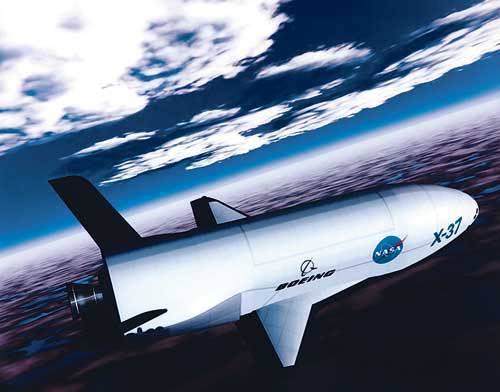
8 on April 2010 in Prague, the presidents of Russia and the United States signed the Treaty on Measures for the Further Reduction and Limitation of Strategic Offensive Arms (START-3). Putting control of nuclear delivery vehicles weaponsHowever, it does not affect strategic missile defense and space weapons.
Meanwhile, the threats emanating from near-Earth space are no less dangerous for our country than the American nuclear triad. Almost half a century speaks eloquently about this. story development of domestic space defense systems.
SATELLIST FIGHTERS
At the start of the 60, the United States made a powerful leap into space. It was then that military satellites were developed. No wonder President L. Johnson said: "Who owns the cosmos, he owns the world."
In response, the Soviet leadership decided to create a system called "Satellite Fighter" (IS). Its customer in 1961 was the country's Air Defense Forces.
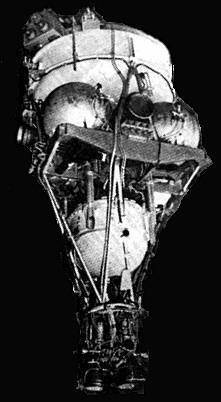
KA "Flight-1"
The first in the world maneuvering spacecraft (Flight) “Flight-1” was launched into 1 orbit on November 1963, and on April 12, 1964 went to another near-Earth spacecraft, Flight-2. He had such a supply of fuel, which allowed him to fly to the moon. Due to this, the device could change the orbit plane and altitude, making wide maneuvers in space. These were the first Soviet anti-satellites developed in the VN Chelomey design bureau.
The SC-interceptor directed an artificial satellite of the Earth, which was the target (AES-target), command and measurement point (I & C). It included the radio-technical complex and the main command-computing center. The information required for the operation of the CIP came from two nodes, called satellite detectors (OS). They were composed of early warning radar "Dniester", and then - "Dnepr", which formed in space a radar barrier with a length of 5000 km and a height of 1500 first, and later 3000 km.
Successful tests of spacecraft interceptors, the development of instrumentation and early warning radar made it possible to begin the creation of special units to deal with the rocket and space enemy.
30 March 1967, the General Staff of the USSR Armed Forces issues a directive that defines the procedure for the formation of anti-missile and anti-space defense forces (ABM and PKO) as part of the country's Air Defense Forces. They were assigned the task of destroying single strategic ballistic missiles and spacecraft in flight.
In 1969, the first stage of the space control center (PSC) and several optical observation points are commissioned. In August, for the first time in the world, the 1970-th IP system for targeting the PSC center successfully intercepted the target SC using the dual-turn method. High accuracy in determining the coordinates made it possible to use a fragmentation-cumulative warhead on the antisatellite, rather than a nuclear one. The Soviet Union has demonstrated to the world that it can not only inspect, but also intercept enemy reconnaissance and navigation spacecraft at altitudes from 250 to 1000 km.
In February, the 1973 of the IP system and the auxiliary complex for the launch of the Lyra target satellites were taken into trial operation by the FFP units. From 1973 to 1978, a single-turn interception method was introduced on the IP system and the range of altitudes at which the satellite targets were impressed was doubled. The antisatellite began to be equipped not only with radar, but also with infrared homing head, which greatly enhanced its protection against radio suppression. To increase the survivability of the Cyclone carrier rocket at the Baikonur cosmodrome, they were placed in silo launchers.
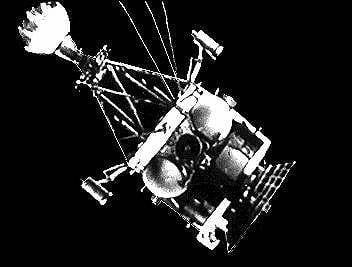
KA 2P
After upgrading, the anti-satellite system was named IS-M. It was put into service in November 1978 of the year, and from 1 on June 1979-th entered on duty. A total of 1963 to 1982 year in the interests of FFP in the near-Earth space brought 41 spacecraft - 20 KA interceptors and 21 KA target (including 18 KA interceptors - using Cyclone launch vehicles). In addition, X-NUMX spacecraft Lira targets were launched (thanks to the reservation, each of them could be fired up to three times).
It must be said that in the United States, with the 1963 of the year, a similar anti-satellite "437 Program" began to be implemented. It used a Thor ballistic missile with a nuclear warhead as an interceptor. However, in 1975, the program was closed due to technical imperfections.
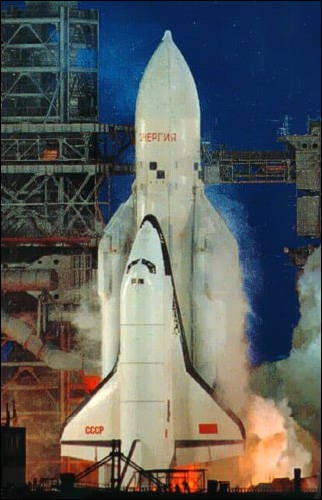
By the beginning of the 80s, the main task of the Air Defense Forces (renamed in 1980) was the reflection and disruption of the aerospace operation of a potential enemy. In addition to fighter aviation, anti-aircraft missile and radioengineering troops, electronic warfare units, the Air Defense Forces include (as they form) the compounds of the missile attack warning system (SPRN) and the space control system, as well as the missile defense and anti-aircraft defense forces. Thanks to the reform, the Air Defense Forces are actually being transformed into the aerospace defense (EKO) troops of the Soviet Union.
Since 80-s of the XX century, the armed confrontation of the two superpowers extends to the lower boundary of space. In this struggle, the United States relied on reusable transport spacecraft (MSTC). The American program Space Shuttle (“Space Shuttle”) demonstratively launched on the day of Yuri Gagarin's 20 anniversary flight into space. 12 April 1981 from Cape Canaveral launched the Columbia orbital ship with astronauts aboard. Since then, shuttle flights continued regularly, with the exception of two interruptions related to the Challenger STS-51L catastrophes in 1986 and Columbia STS-107 in 2003.
LAST FLIGHT "BURANA"
In the Soviet Union, these "shuttles" have always been considered as an element of the American PKO system. Shuttles could change the plane and height of the orbit. American astronauts, using a manipulator arm located in the cargo hold, took their satellites in space and, placing them inside the ship, transported them to Earth for subsequent repairs.
In addition, military and civilian satellites were repeatedly launched from the shuttles. All this confirmed the fears of the Soviet specialists about the possibility of using the space shuttles to drop foreign spacecraft from orbit or to capture them for subsequent delivery to the American space center.
Initially, the USSR responded to the Space Shuttle program with a demonstration of military force. 18 June 1982, the Soviet army holds the largest strategic exercises, which in the West called the seven-hour nuclear war. On that day, in addition to missiles of various classes and purposes, an interceptor KA was launched to destroy the target KA. Taking advantage of Soviet exercises as a pretext, US President R. Reagan March 22 1983 of the year outlined in his speech the main provisions of the Strategic Defense Initiative (SOI), or the Star Wars program, as it was also called in the media.
It provided for the deployment in space of laser, beam, electromagnetic, microwave weapons, as well as a new generation of space-to-space missiles. The possibility of using nuclear weapons remained.
Literally embracing American plans, the Politburo of the CPSU Central Committee, headed by Y. Andropov, developed a set of response measures. An attempt is being made by political means to stop the implementation of the PIO. To this end, in August 1983 of the USSR unilaterally declares a moratorium on the testing of anti-satellite weapons.
Washington responded to the positive actions of Moscow with new military developments. One of them is the ASAT (Anti-Satellite) anti-satellite complex. It consisted of the F-15 Eagle fighter, as well as the SRAM-Altair two-stage solid-propellant rocket, which was launched directly from the aircraft on the direct launch trajectory, and the MHIV anti-satellite interceptor with an infrared homing head (Miniature Homing Intercept Vehicle).
ASAT could hit spacecraft by their thermal radiation at altitudes up to 800-1000 km. The tests of the complex were completed in 1986 year. But the congress did not begin to finance its deployment, given the moratorium on anti-satellite launches in the USSR.
In order to preserve parity with the United States in the Soviet Union in the 1982-1984 years, research is being conducted on the creation of a preorbital air-missile complex. He was supposed to hit the AES-target by direct hit of a small-sized interceptor launched from a high-altitude fighter MiG-XNUMHD. The complex had a high efficiency of suppressing enemy space vehicles. However, his tests with a real interception of a target satellite in space in order to maintain a moratorium on the use of the FFP system at that time were not carried out.
In parallel with the development of the ASAT system in the United States, work continued on expanding the combat capabilities of the shuttles. From 12 to 18 on January 1986, the flight of the Columbia STS-61-C orbital ship took place. The shuttle route was located south of Moscow almost 2500 km. During the flight, the behavior of the heat-shielding layer of an orbital spacecraft in dense layers of the atmosphere was studied. This is evidenced by the emblem of the mission STS-61-С, in which the shuttle is depicted at the moment of entering the Earth’s atmosphere.
The orbital ship Columbia was equipped with a thermal control system with capillary coolant flow. On board was the laboratory of materials science. A special design had tail. An infrared camera was located in a vertical stabilizer in a special gondola, which was intended for shooting the upper part of the fuselage and wings on the atmospheric descent section, which provided a more detailed study of the state of the ship under heating. These improvements allowed the Columbia STS-61-С shuttle to carry out one experimental descent to the mesosphere, followed by its ascent to orbit.
For the Soviet intelligence, the CIA organized a leak of information about the ability of shuttles to “dive” into the Earth’s atmosphere. On the basis of intelligence, a number of domestic specialists gave birth to a version: the “shuttle” could suddenly drop to 80 km and, like a hypersonic plane, perform a side maneuver on 2500 km. Having flown to Moscow, he will destroy the Kremlin with a single blow with a nuclear bomb, deciding the outcome of the war. Moreover, there will be no chance of preventing a similar attack on domestic PKO, ABM or anti-Russian-German anti-missile systems ...
Alas, the CIA's misinformation found fertile ground.
Almost six months before the flight of the Columbia STS-61-C shuttle, the orbiting spacecraft Challenger STS-51-B flew, which 1 of May 1985 passed over the territory of the USSR, but did not make dives into the Earth’s atmosphere. However, it was the Challenger STS-51-B missions in the CPSU Central Committee that attributed the imitation of dropping an atomic bomb to Moscow and on the Day of Solidarity of Workers and the 25 anniversary of the destruction of the U-2 spy aircraft under Sverdlovsk.
The common arguments of some scientists about the lack of technical and energy capabilities for shuttles to go down to 80 km, to drop an atomic bomb, and then no one in the Soviet leadership wanted to listen again to go into space. At that time, they did not take into account the information of the Air Defense Forces (from the anti-aircraft missile systems, missile and missile defense systems and missile defense systems), which did not confirm the fact of diving over Moscow.
The myth of the American intelligence about the almost fantastic combat capabilities of shuttles received support from the Politburo of the Central Committee of the CPSU. The work on the creation of the Energia-Buran rocket and space system has accelerated considerably. At the same time, five reusable spacecraft were being built at once, capable of solving, inter alia, PKO tasks. Each of them had to be able to make “dives” to an altitude of up to 80 km and carry up to 15 unmanned orbital rocket planes (BOR - planning unmanned nuclear bombs designed to destroy space, land and sea targets).
The first of the "Burans" was launched on November 15 1988 of the year. His flight was successful, but ... Instead of one dollar, which Washington actually spent on the SDI program, Moscow began to spend two, which bled the USSR economy. And when there was a breakthrough in this area, at the request of US President R. Reagan, Soviet President M. Gorbachev closed the Energy-Buran program in 1990 in the year.
LASER RESPONSE
In order to catch up with the United States in a laser theme, the Soviet Union in the 80-ies intensified research on the creation of anti-missile and anti-space optical quantum generators or lasers. (The word laser is an abbreviation of the English phrase Light Amplification by Stimulated Emission Radiation - light amplification as a result of stimulated radiation).
Initially, it was intended to place ground-based combat lasers near large power stations, primarily nuclear ones. Such a neighborhood made it possible to provide optical quantum generators with a powerful source of energy and at the same time protect important enterprises from a missile strike.
However, the experiments showed that the laser beam was strongly scattered by the atmosphere of the Earth. At a distance of 100 km, the laser spot had a diameter of at least 20 m. However, in the course of research, Soviet scientists found one interesting feature of laser radiation - the ability to suppress optical-electronic reconnaissance equipment on space satellites and orbital spacecraft of a potential enemy. Good prospects were also confirmed for the use of combat lasers in space, but subject to the availability of powerful and compact energy sources on board the spacecraft.
The most famous Soviet scientific-experimental complex "Terra-3", located on the research testing site Sary-Shagan (Kazakhstan). Academician N. Ustinov, who directed the creation of a quantum locator capable of determining the distance to the target, its size, shape, and trajectory of movement, directly supervised the work.
In order to experiment, it was decided to try to accompany the shuttle Challenger STS-41-G. Regular reconnaissance flights of American spy satellites and “shuttle traders” over Sary-Shagan forced the Soviet “defense industry” to interrupt work. This broke the established test schedule and caused many other inconveniences.
In terms of weather conditions, a favorable situation arose on October 10 1984. On that day, the Challenger STS-41-G once again flew over the ground. In the detection mode, it was escorted (a similar experiment with the United States intelligence satellite in September, China carried out 2006).
The results obtained from the Terra-3 project helped to create a radio-optical space object recognition system “Krona” with a radio and laser-optical locator capable of forming an image of the accompanying target.
In 1985, the development of the first Soviet chemical laser, which was sized to allow it to be installed on board the IL-76, was completed. The Soviet aviation complex received the designation A-60 (flying laboratory 1А1). In fact, it was an analogue of a space laser for the Skif-DM project's combat laser orbital platform. (Under President Yeltsin, the technology for producing a chemical laser was transferred to the United States. Overseas, it was used to develop an ABL air-based laser designed to hit ballistic missiles from a Boeing 747-400F aircraft.)
It should be noted that the most powerful launch vehicle in the world, Energia, was supposed to be used not only to launch the Buran, but also to put into orbit combat platforms with space-to-space missiles (the Kaskad complex), and in the long run Space-to-earth. One of these platforms, the Polyus (Mir-2) spacecraft, was a 80-ton mock-up of the Skif-DM combat laser orbital station. Its launch with the help of the Energia launch vehicle took place on 15 on May 1987. Due to the failure of the control teams, the mock-up of the station with the research laser on board did not go into orbit, falling in the Pacific Ocean (the launch of the Energia launch vehicle was considered successful).
In addition to the development of laser technology, despite the unilateral moratorium on the use of the IP system in space, work on the ground upgrade of the PKO complex continued. This allowed in April 1991 of the year to put into operation an improved version of the IS-MU system. To single-turn and multi-turn methods of interception added direct pre-turn.
Within the energy possibilities possessed by the spacecraft, the interception of the AES-target on intersecting courses, as well as a maneuvering target such as a shuttle, was implemented. In the case of a multi-turn interception, the opportunity arose for repeatedly approaching the target and hitting several objects with one interceptor carrying four space-to-space missiles. Soon, modernization of the SSP system to the level of IS-MD began, with the possibility of intercepting AES targets in geostationary orbit (altitude - 40 000 km).
The events of August 1991 had a negative impact on the fate of the country's aerospace defense. By the decree of the President of the USSR 12 in November 1991, the troops of the missile defense and PKO, parts of the systems of the PRE and the PAC were transferred to the Strategic Deterrence Force (the decree was canceled in the 1995 year).
After the collapse of the Soviet Union, the improvement of the aerospace defense system continues for some time by inertia. The pairing of computing systems is completed, and the software and algorithmic pairing of the parts of the missile defense system, PKO, PRN and KKP is also carried out. This made it possible to form in October 1992 of the year in the structure of the Air Defense Forces a single type of troops - the Space Rocket Defense Forces (CSC). They included the association of PRN, the association of missile defense and the connection of the PAC.
However, a significant part of the facilities of the RCO Troops, including the Baikonur cosmodrome with launching-start units, was out of the territory of Russia and became the property of other states. The Buran orbital ship flying to space also departed to Kazakhstan (May 12 2002 of the year was crushed by fragments of a collapsed roof of the assembly and test hull). Yuzhnoye Design Office, the manufacturer of the Cyclone carrier rocket and the Lear lira, was on the territory of Ukraine.
Proceeding from the current situation, President Yeltsin in 1993, by his decree, ceases to carry combat duty on the IS-MU system, and the anti-satellite complex itself is removed from service. 14 on January 1994 is another decree. It envisaged the creation of a system of reconnaissance and control of outer space, the leadership of which was assigned to the commander-in-chief of the Air Defense Forces. But already 16 July 1997, the document is signed, which still raises many questions.
By decree of the President of the Russian Federation, RKO troops are transferred to the Strategic Missile Forces, and air defense troops are included in the Air Force. Thus, a fatty cross is put on the plans for the restoration of the ASD. It is safe to say that this fateful decision for the security of Russia was made not without the “friendly” prompting of senior officials close to Washington then surrounded by Yeltsin ...
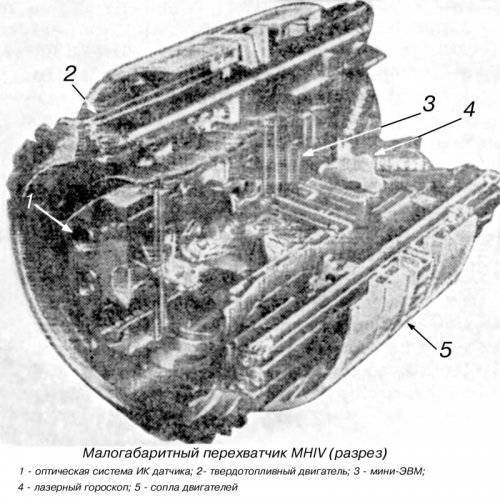
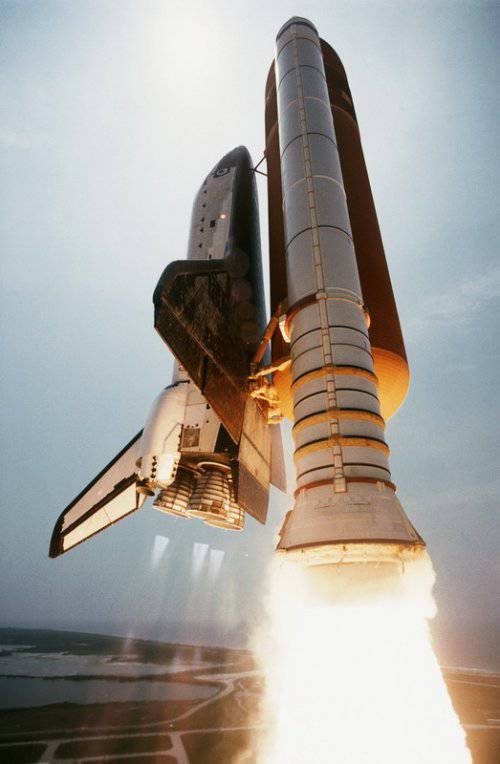
Information